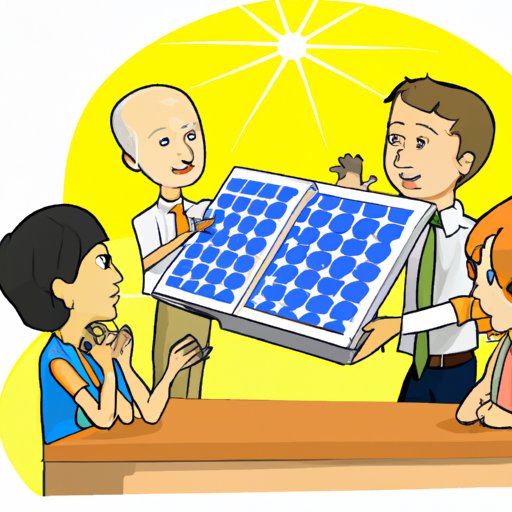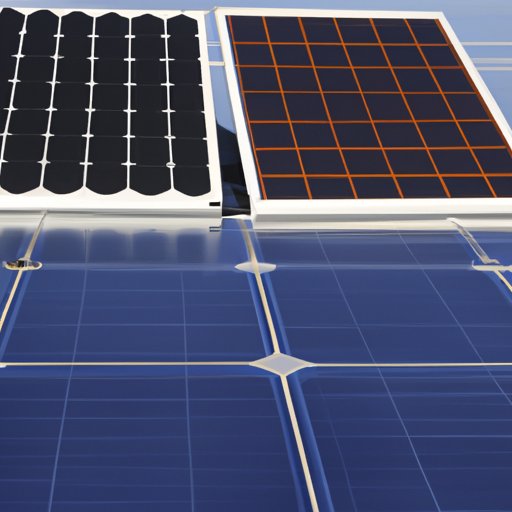Introduction
A solar panel is an electrical device that converts sunlight into electricity. The purpose of a solar panel is to capture light from the sun and convert it into electricity, which can then be used to power homes and businesses. Solar panels are an increasingly popular choice for those looking to reduce their carbon footprint and save money on their electricity bills.
Explaining the Science Behind Solar Panels
The process of converting sunlight into electricity is known as photovoltaic (PV) conversion. When sunlight hits a solar panel, it is absorbed by photovoltaic cells, which are made up of semiconductor materials such as silicon. As the photons from the sunlight hit the cell, they knock electrons loose from their atoms, generating an electric current. This electric current is then collected by metal contacts on the cell and directed through wires to an inverter, which converts the direct current (DC) electricity into alternating current (AC) electricity, which is usable in most homes and businesses.
An Overview of Solar Panel Technology
Solar panels come in a variety of shapes and sizes, and can be made from a range of materials. The most common type of solar panel is the monocrystalline panel, which is made from a single crystal of silicon. Polycrystalline panels are made from multiple crystals of silicon, while thin-film panels are made from amorphous silicon or other materials. Each type of panel has its own advantages and disadvantages, such as efficiency, cost, and durability.

Describing the Components That Make Up a Solar Panel
A typical solar panel is made up of several individual components, including photovoltaic cells, wiring, an inverter, and a frame. The photovoltaic cells are the main component, as they are responsible for converting sunlight into electricity. Wiring connects the cells to each other and to the inverter, which converts the DC electricity into AC electricity. The frame holds all of these components together and provides protection from the elements.

Demonstrating How Solar Panels Generate Electricity
When sunlight hits a solar panel, the photovoltaic cells absorb the photons and convert them into electricity. This electricity flows through the wiring to the inverter, which converts the DC electricity into AC electricity. This AC electricity can then be sent to the electrical grid, where it is used to power homes and businesses.
Examining the Benefits of Installing Solar Panels
Installing solar panels can have numerous benefits, both for the environment and for your pocketbook. From an environmental perspective, solar energy is a clean, renewable resource that does not produce any greenhouse gas emissions. Additionally, using solar energy can help reduce reliance on fossil fuels and reduce air pollution. From a financial perspective, installing solar panels can result in significant savings on your electricity bill.

Comparing Different Types of Solar Panels
When choosing a solar panel, it’s important to consider the differences between monocrystalline, polycrystalline, and thin-film panels. Monocrystalline panels are generally more efficient than polycrystalline panels, but they are also more expensive. Thin-film panels are less efficient than crystalline panels, but they are also cheaper and easier to install. Ultimately, the best option will depend on your budget and needs.
Conclusion
Solar panels are an effective way to generate electricity from the sun, allowing you to reduce your carbon footprint and save money on your electricity bills. By understanding the science behind solar energy generation and exploring the different types of panels available, you can make an informed decision about which type of panel is right for you. So, if you’re looking for a clean, renewable source of energy, solar panels may be the perfect solution for you.
(Note: Is this article not meeting your expectations? Do you have knowledge or insights to share? Unlock new opportunities and expand your reach by joining our authors team. Click Registration to join us and share your expertise with our readers.)
